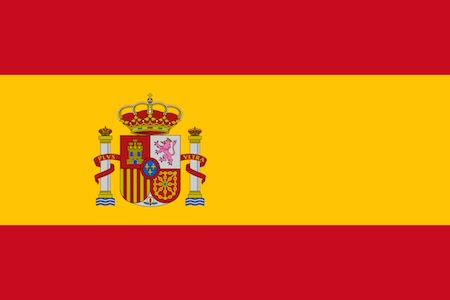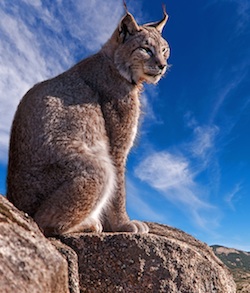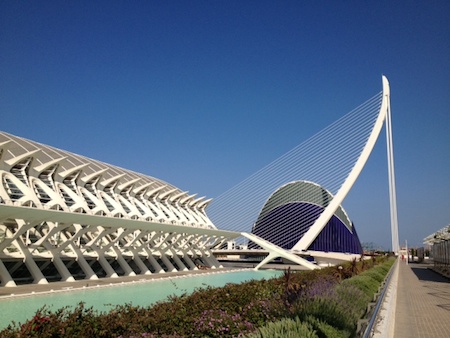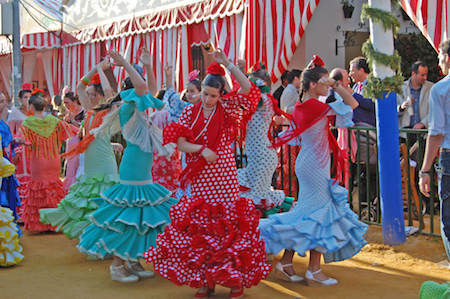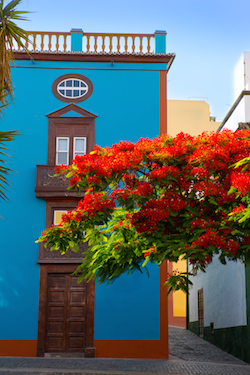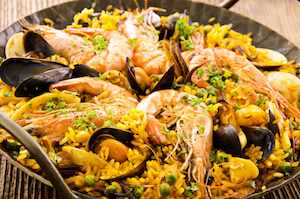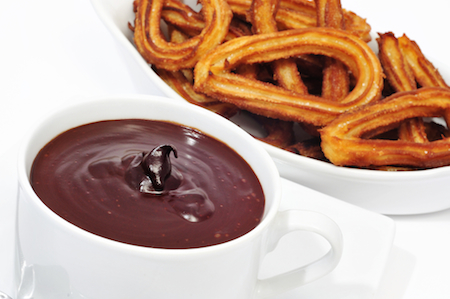Basic facts
• Population: 47.7 million people live in Spain (2014)
• Capital: Madrid, with 3.3 million inhabitants, is Spain's biggest city.
• Name: Reino de España (Kingdom of Spain), short form: España
• Government: Parliamentary Monarchy
• Languages: Castilian Spanish 74%, Catalan 17%, Galician, Basque and many other dialects
• Literacy: More than 98% can read and write.
• Religion: mainly Christians (Roman Catholics 94%)
• Currency: 1 Euro=100 cents, before 2001 Spanish peseta
• National Symbol: The pillars of Hercules, short-toed eagle (national bird), red carnation (national flower). The official Spanish anthem is one of only four anthems in the world without lyrics. Included in our audio link above, however, are the lyrics which are sometimes added.
• History: From 711 to 1492 Islamic Moors ruled in Spain. In 1492 Christopher Columbus discovers America and the Spanish rulers start forming their empire. In the 16th century Spanish kings ruled over many European countries, Portugal, Netherlands, parts of France, Germany, Italy and Austria. The Spanish Civil War rages in Spain from 1936 to 1939 when dictator General Franco takes over the country. In 1975 Franco dies and Juan Carlos I becomes King of Spain. In 2014 his son Felipe follows him on the throne as Juan Carlos resigns due to old age.
Where is Spain?
• Spain lies in Southern Europe, a flight to Madrid take roughly 2.5 hours from London/England, 7 hours from New York/USASpain borders the countries Portugal, Andorra, France, Gibraltar and also Morocco, as the two Ceuta and Melilla which are located in Morocco, also belong to Spain.
Spain is the only European country which borders Africa. It is separated by Africa by the straits of Gibraltar and two of the cities belonging to Spain are inside Morocco.
Spain Facts: Geography
Spain is bordering the Mediterranean Sea in the South and East. In the North the Pyrenees are forming a natural border with the tiny country Andorra and also France. In the Northwest is the Atlantic Ocean and in the West lies Portugal. The Spanish nation is divided in 17 'autonomous communities' which are regions where people often speak different dialects or have their own regional government.
Here are some interesting facts about Spain's geography:
- Longest river: Rio Ebro with 910km
- Largest lake: Mar Menor is also the largest salt lake in Europe
- Highest Mountain: El Teide on Tenerife (Canary Islands) with 3,718m
- Largest Island: Mallorca (which is part of the Balearic Islands)
Spain Facts: Animals in Spain
The Mediterranean or Iberian lynx is almost extinct, there are only a few surviving mammals left in the south of Spain and Portugal. The lynx is the most endangered cat in the world.
Other protected animals are the Iberian wild boar, the Iberian fox, the Iberian wolves and the Cantabrian brown bear.
The short-toed eagle is Spain's national bird. The region of Andalusia is home to the Andalusian horses which are known for their speed and strength.
Spain Attractions for Kids
- Madrid: The capital city and the royal palace
- Barcelona: Explore the amazing buildings by the artist and architect Gaudi.
- Valencia: Famous for the futuristic 'Museum of Sciences' complex
- The Pyrenees: Go hiking in the mountains between Spain and France
- Santiago de Compostela: Famous for the pilgrimage
- Granada: Go back in time when visiting the historic Alhambra and view the colourful mosaics.
There are so many great places in Spain to visit, just to many to mention here. We will show you more places on a special page here soon.
Some Spain Facts about Spanish People
The Spanish people have their own royal family who lives in the royal place, the 'Zarzuela Palace', outside of Madrid. The Royal Palace, Palacio Real, in the city of Madrid is the place where official functions take place. On 19 June 2014, the son of former king Juan Carlos , Felipe VI, was crowned the new king of Spain. Juan Carlos retired due to old age. King Felipe VI, aged 46, and Queen Letizia have two daughters.
Many Spanish people are soccer fans. The top soccer clubs are: Real Madrid and FC Barcelona.
Spain is known for its flamenco dance. In many towns and villages people dance the flamenco for special festivities. Here you can see the girls performing at a fiesta in Seville.
The Spanish are also known for their great festivals, such as the 'Tomatina' and the 'Running of the Bulls'. The 'Tomatina' festival in the small town of Buñol, to the west of Valencia, is the world's biggest food fight, as the people throw tomatoes at each other. The festival takes place every year in August, but the event only takes one hour, as the people throw tomatoes at each other. Another famous spanish festival takes place in the town of Pamplona in Northern Spain. The highlight of the festival is the 'Running of the Bulls'. Six bulls are chasing people who try to run away in front of the animals. Bullfights also are popular events in the arenas of several cities, but are banned in others.
As summers get very hot in the Spanish cities of the inland, many Spaniards flock to the seaside during summer holidays or go tho the mountainous areas in the north of the country.
More Spain Facts about Spanish Language
Spanish is spoken in Spain and in various South American countries, among them Argentina, Bolivia, Chile, Columbia, Ecuador, Mexico, Peru and Venezuela. Lots of variations and dialects are spoken; the Castillian Spanish is recognised as 'typical' Spanish and is spoken across the country of Spain. Catalan is spoken in the region around Barcelona, Catalunya, and this language reads and sounds different to Spanish. Basque is also a main dialect and is spoken in the Basque country in the north of Spain.
Here are some useful Spanish words:
- Buenos dias: Good day
- ¡Hola! Hello
- ¿Que tal? How are you?
- adios: bye bye
- gracias: thank you
- Te quiero: I love you
The Spanish language uses inverted question marks and exclamation marks and letter which have symbols, accents, on them, such as the n with an accent in: España
Spanish Food
The Spanish main dishes contain: potatoes, rice, fish, meat, beans, chickpeas and fruit.
Here is some typical Spanish food:
- Paella: A spiced rice dish with seafood or meat such as rabbit and lamb
- Gazpacho: Vegetable soup or stew with chorizo
- Coca: A sweet bread
- Empañada: Stuffed bread or pie
- Turon: Nougat sweet cake made with honey and nuts
- Jamon Serrano: Pork leg ham
- Chorizo: Pork sausage
- Chocolate y Churros: Hot and very thick chocolate drink with sweet fried pastry (as you can see on the right)
- Coca: A sweet bread
- Turon: Nougat sweet cake made with honey and nuts
Zdroj:http://www.kids-world-travel-guide.com/spain-facts.html
